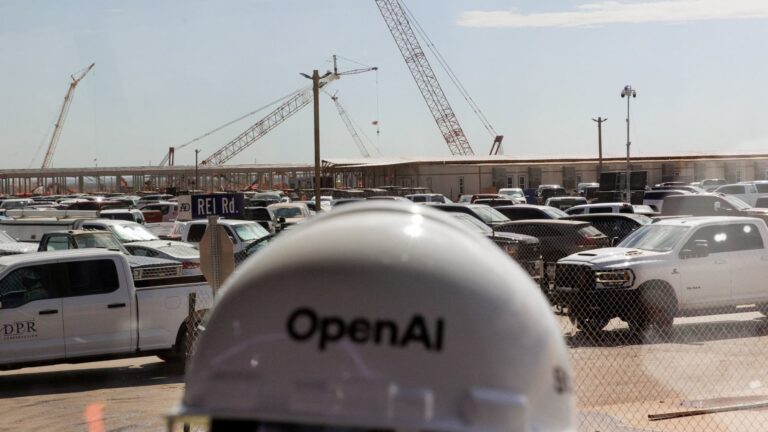The steel frame of data centers under construction during a tour of the OpenAI data center in Abilene, Texas, U.S., Sept. 23, 2025.
Shelby Tauber | Reuters
OpenAI, Meta and Alphabet are leading a data center boom in the U.S. as they try to keep pace with frenzied demand for artificial intelligence, and the computing resources required to build increasingly sophisticated models.
As they prepare to collectively spend hundreds of billions of dollars in build-outs, there’s one glaring bottleneck: labor.
In the manufacturing, construction and electrical trades, there’s a dearth of talent as skilled laborers age out of the workforce without being replaced by younger workers. The U.S. could face a shortfall of 1.9 million manufacturing workers by 2033, according to data earlier this year from the National Association of Manufacturers, which described the matter as an “economic and national security issue.”
In construction, Associated Builders and Contractors, or ABC, projects nearly half a million workers will be needed in 2025 alone. Add to the worker shortages the uncertainty that comes with new tariffs and changes to immigration policy, and the problem begins to appear potentially insurmountable, experts say.
“I think these projects are likely to go over budget and miss their deadlines, but that is typical in U.S. construction, even for not-so-complicated, large projects,” said Anirban Basu, chief economist for ABC. “Now you add this layer of complexity, this need for precision, that would not exist in a typical apartment building or office building. … Do we have the workforce for that? Not in abundance, that’s for sure.”
ABC’s construction backlog data shows that 14% of the group’s members are under contract to perform work on data centers, a level that’s held steady since the question was first posed in June, and indicates there’s a backlog of 8.5 months on projects.
Meanwhile, the construction unemployment rate sank to 3.2% in August, tied for a record low, from 3.4% a month earlier, according to the Bureau of Labor Statistics.
George Carrillo, CEO of the Hispanic Construction Council, told CNBC the worker shortage is already impacting data center development. Carrillo said Hispanic-owned firms are the fastest growing in construction. A recent study from his group called for reforms that would cut permitting timelines, speed up payments to small contractors and create a lawful work pathway for trained people.
“These projects represent trillions in investment but require more than steel and concrete,” Carrillo said in an email, citing a projected shortage in construction workers of 3.2 million by 2030.
“Retirements, restrictive immigration policies, and deportation threats are shrinking the labor pool, creating the risk that data centers become stranded assets, billion-dollar buildings that cannot go online,” he said.

Mike Bellaman, CEO of ABC, told CNBC that speed of service is critical for data center builds because of the immediate demand.
That could present a big opportunity for younger workers or those new to the industry to enhance their skills and advance in rank, taking advantage of the need for people who are trained across a variety of areas.
“They can become quickly masters of the trade of installing that work,” Bellaman said. “They have a huge opportunity to get a lot of on-the-job training and practical training where they become masters, so we can get apprentices up to journeyman level and specific tasks.”
Many of the jobs can last from three years to a decade given the size of the projects, said Pat Lynch, executive managing director and global lead of CBRE’s Global Data Center Solutions. Lynch compared the projects to the building of railroads or large oil and gas deployments.
“I do see longer-term economic stability from these projects in these regions,” he said. “Clearly in many of these locations, you’re having to pull employment from a large regional area, not just from a single state or a couple of markets, at a time that these skilled workers are in short supply in major markets to begin with.”
ABC’s Basu said that the tech giants are so well capitalized and committed to large-scale growth that they’ll be willing to pay up to bring in workers from other geographic areas, and to train people on the necessary skills.
“These hyperscalers have so much money, and there’s so much at stake in terms of global dominion and artificial intelligence, maybe they’ll just throw so much money at it,” he said. “These problems go away.”
WATCH: CNBC’s interview with Nvidia CEO Jensen Huang and OpenAI leaders Sam Altman and Greg Brockman

